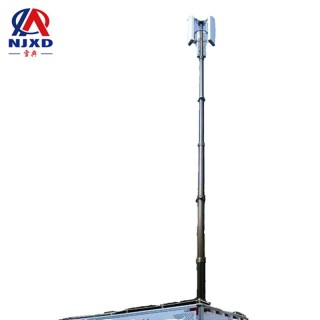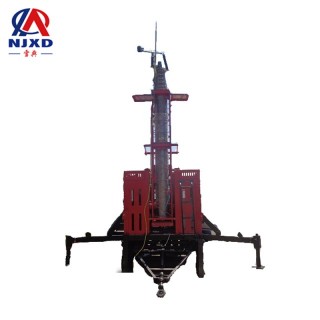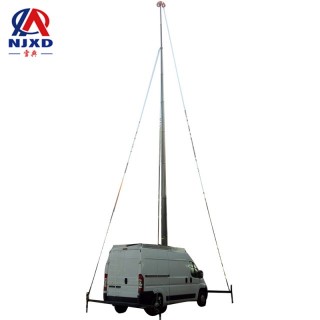NEWS
Development History of 3G mobile communication technology
Time:2021-01-05 View:

Development history
In the past 10 years, great changes have taken place in world telecom. The rapid development of mobile communication, especially in cellular communities, has enabled users to completely get rid of the shackles of terminal equipment and realize complete personal mobility, reliable transmission and connection methods. Entering the 21st century, mobile communication will gradually evolve into an indispensable tool for social development and progress.
First generation
The first generation of mobile communication system (1G) was put forward in the early 1980 s. It was completed in the early 1990 s, such as NMT and AMPS, and NMT was put into operation in 1981. The first generation of mobile communication system is based on simulation transmission, which is characterized by small business volume, poor quality, poor security, no encryption and low speed. 1g is mainly based on cellular networking, directly using analog voice modulation technology, and the transmission rate is about 2.4kbit/s. Different countries adopt different working systems.
Second generation
The second generation mobile communication system (2G) originated in the early 90's. The European Telecommunications Standards Association proposed GSM Phase 2 + in 1996 to expand and improve the business and performance defined in GSM Phase 1 and Phase 2. It mainly includes CMAEL (mobile network enhancement logic for customized applications),S0 (supports optimal routing), immediate billing, GSM 900/1800 dual-band work, etc, it also includes enhanced speech coding and decoding technology fully compatible with full speed rate, which improves the quality of voice. Half speed codec can nearly double the capacity of GSM system.
In the GSM Phase2 + phase, more intensive frequency reuse, multi-reuse and multi-reuse structure technologies are adopted, and smart antenna technology, dual-band and other technologies are introduced, effectively overcome the defect of insufficient GSM system capacity caused by the sharp increase of business volume; The application of adaptive speech coding (AMR) technology greatly improves the system call quality; the introduction of GPRs/EDGE technology organically combines GSM with computer communication/Internet, and the data transmission rate can reach 115/384kbit/s, thus continuously enhancing the GSM function, initially, it has the ability to support multimedia services.
Although 2G technology has been continuously improved in development, with the continuous expansion of user scale and network scale, frequency resources have been nearly exhausted, voice quality cannot reach the standard of user satisfaction, and data communication rate is too low, it cannot meet the needs of mobile multimedia services in a real sense.

Third generation
The third generation mobile communication system (3G), also known as IMT 2000, is a system under full development. Its most basic feature is intelligent signal processing technology, the intelligent signal processing unit will become a basic functional module, supporting voice and multimedia data communication. It can provide various broadband information services that cannot be provided by the first two generations of products, such as high-speed data, slow images and TV images. For example, the maximum transmission rate of WCDMA is 2Mbps when the user is stationary, and the maximum transmission rate is 144Kbps when the user is moving at high speed, accounting for about frequency span and 5MHz.
However, the communication standard of the third generation mobile communication system consists of WCDMA,CDMA2000 and TD-SCDMA, which together form an IMT 2000 family, and the members are compatible with each other, therefore, the existing mobile communication system is not personal communication and global communication in the true sense; Moreover, the spectrum utilization rate of 3G is still relatively low, and precious spectrum resources cannot be fully utilized; Third, the rate supported by 3G is not high enough. For example, a single carrier only supports services with a maximum of 2 to fDps, etc. These deficiencies are far from meeting the needs of future mobile communication development, so we are looking for a new technology that can not only solve the existing problems, but also meet the needs of future mobile communication (that is, the new generation of mobile communication: next generation mobile communication) is necessary.
The development of 3G communication technology in our country is changing with each passing day. On January 7, 2009, China issued three 3G licenses at the same time, namely, TD-SCDMA, WCDMA and CDMA200, which marked that China officially entered the 3G era. In more than two years of operation, 3G network has created a large number of employment opportunities for China while stimulating the GDP growth of our country. From a technical point of view, the advantages of 3G mobile communication network over 2G network lie in larger system capacity and better communication quality, and can realize seamless roaming worldwide, provide communication services including voice, data, multimedia and other forms for communication users. In the field of international mobile communications, ITU has its minimum requirements and standards for 3G networks, that is, on high-speed moving ground objects, the data service provided by 3G network is 64~144KB/s, which should be able to adapt to the mobile environment of 500 km/h. According to this standard, among the three current 3G networks in our country, WCDMA and CDMA2000 mainly adopt "cross fade" technology, which can realize the normal communication of mobile terminals at 500km per hour, that is to say, when communicating with another new base station, the connection with the original base station is interrupted first, but after connecting with the new base station, the connection with the original base station is interrupted, this is also a prominent feature that 3G network is superior to 2G network; WCDMA technology has solved the seamless coverage problem of high-speed moving objects; In addition, TD-SCDMA has also studied the coverage scheme of high-speed railway communication. Therefore, 3G mobile communication network already has the basic conditions to provide communication guarantee for high-speed rail in the technical level, which lays a solid foundation for the complete solution of mobile communication problems in the development process of high-speed rail in our country.

High-speed railway mobile communication and 3G technology
Generally speaking, on high-speed moving objects, when the speed exceeds 150 kilometers per hour, the fast power control effect of 2G/3G is not good. At this time, it depends on which communication system has many anti-fading methods, and the fading reserve is large. TD-SCDMA is not suitable for high-speed mobile situations, mainly because the smart antenna with advanced technical performance is not fully popularized and covered in high-speed rail, and the gain of the system is not high, plus the power of using the terminal is not large, in the high-speed rail, the coverage edge is dropped due to insufficient fading reserves; The GSM system has not enabled the power control device in the high-speed rail system, but the GSM system only provides voice calls, channel coding and error correction technology plays a significant role in this case. When the power of the communication base station reaches 40W, the terminal power reaches 2W, and the distance of the base station is short, the fading Reserve plays a role, the application effect of high-speed rail is OK. The EDGE system in GSM system is not effective in high-speed railway, mainly because the coding efficiency of EDGE in high-speed data is 1, there is no coding redundancy, and the corresponding channel coding gain is relatively low. In addition, 8PSK modulation of high-order data will make the signal-to-noise ratio of demodulated EDGE data higher, resulting in higher coverage voltage of EDGE and larger fading reserve. However, in the actual high-speed rail system, the fading reserve between the coverage areas of two base stations is generally insufficient, which makes the transmitted data rate drop rapidly. Therefore, it is necessary to seek a new technical system to solve the mobile communication problem in high-speed rail.

CATEGORY
NEWS
- Technical requirements for lifting lightning protection devices
- Development History of 3G mobile communication technology
- The development history of 4G5G lifting mobile communication technology
- Cluster system and satellite communication lifting mobile communication system
- AdHoc network and wireless communication of lifting mobile communication system